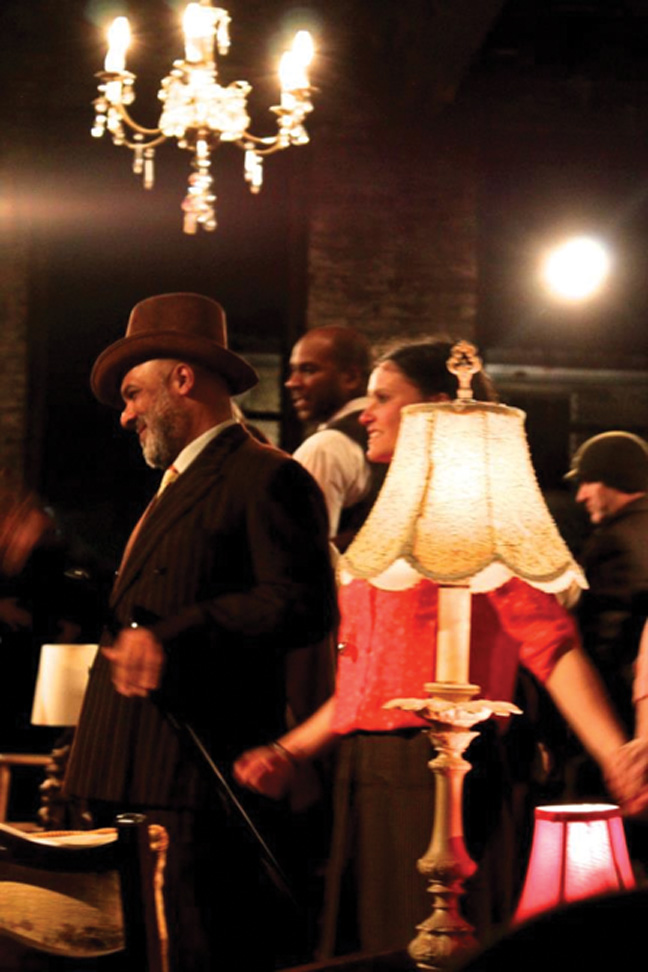The New York Port Authority Grain Terminal in the Gowanus Bay Terminal has always been an interesting landmark for me since I first noticed it towering over the ball fields in Red Hook almost a year ago. I could always easily pinpoint Red Hook from the Brooklyn Queens Expressway or the elevated section of the F train by looking to the Grain Terminal standing high above everything else in its environs. From here it seemed to loom every bit as large as the Freedom Tower in lower Manhattan.

So, having learned that it would be the venue for Falconworks latest production I was immediately intrigued. I have seen a lot of site specific productions in the past year, particularly in Red Hook. The choosing of Ibsen’s “Enemy of the People” and this site is timely and likely designed to raise awareness in Red Hook about environmental and economic issues involved in relocating toxic sludge from the Gowanus Canal to Red Hook.
Arriving for the only daytime performance of the limited engagement of this production I missed the visual nighttime spectacle of the hundred or so lampshades that decorated the large rock mound on the approach to the Grain Terminal. This was a first introduction to the magnificent stylized set by DebO and Emily Gabler which included many areas and rooms that fell outside of the playing space.
In fact, I could easily image myself in 19th century Norway as I wandered through the finely decorated rooms of the Grain Terminal’s disused administration building and looked back out over the vista of the already costumed performers walking up and down the pier, This, I assume, was an exercise in getting themselves into character and to prepare emotionally for their performance. I was certainly filled with anticipation, as I took my seat in the adapted auditorium that these characters that I saw on the pier would soon be descending onto this lavishly designed playing space.
The original setting of the play is a small Norwegian coastal town in the 19th century but Falconworks’ clever staging of this play could be then, now in 21st century Red Hook or any time and place in between. Possibly the greatest strength of Ibsen’s play is that it could happen any time and the themes and debate it presents is universally true of all times and societies.
The story revolves around the town’s bathing complex which is the town’s main source of income and the fact that its drainage system has been contaminated. Dr. Stockmann, the town Doctor and medical officer of the baths has concluded that the baths’ drainage system has been contaminated and therefore detrimental to the health of the baths’ patrons. He, of course feels morally obliged to make public his findings and protect the people from being exposed to the toxins that pollute the baths.
Dr. Stockmann’s is shocked to find the town Mayor; his own brother will not support him believing the closure of the baths will be the ruination of the town economically. Rather than support him, the Mayor implores the Doctor to withhold the information from the public. When the Doctor refuses, the Mayor attempts to play down the severity of the contamination and discredit his brother.
What ensues is a compelling drama that divides a community, pitting brother against brother.
One brother’s worldview being pragmatic Realism, the other’s being principled Idealism. The townspeople and local newspaper initially support the principled idealism of the Doctor but soon abandon this position with the realization of the personal sacrifice of being principled. They are willing to overlook the implications of the contamination the doctor warns of and instead act in self interest by denouncing him as an enemy of the people.
In arguably the productions best scene, Falconworks illustrates how the general population can be easily led by appealing to their emotions and prejudices. In this climatic scene, the actors while still in character passed out notes with lines to audience members. Each audience member with lines was then in turn prompted to read their line on cue by newspaper official, Billing who acted as rabble rouser. This served as a brilliant piece of interactive theater through audience participation and it was evident on the faces of the people that they enjoyed their active inclusion in the performance.
In response to this, Reg Flowers as Dr. Stockmann delivers a emotional tirade where he denounces the will of the unprincipled corruptible majority and reminds them that it takes a strong man to stand up for what he believes in the face of the masses. The townspeople find this counter attack extremely offensive and brand him an enemy of the people. And so a good principled man becomes ostracized from the community. The play concludes with Dr. Stockmann resolving to stay true to his principles and to continue to defy the authorities who kowtow to self-interested factions within the town.
Reg Flowers has crafted a brilliant piece of theater in his direction of the play. The production moved with pace and was genuinely compelling as both a political thriller and a family drama. My compliments to an excellent ensemble which includes the talents of Stephanie Batchelder, Matt Behan, Robert Cole, Yeshwant Chitalkar, Christian Fletcher, Corbin Laedlein, Dannelle Johnson, Dontae McCoy, Henrietta Perkins, Rebecca Stabile and Chance Warren Dixon for giving me and the residents of Red Hook to an afternoon of great live theater .








